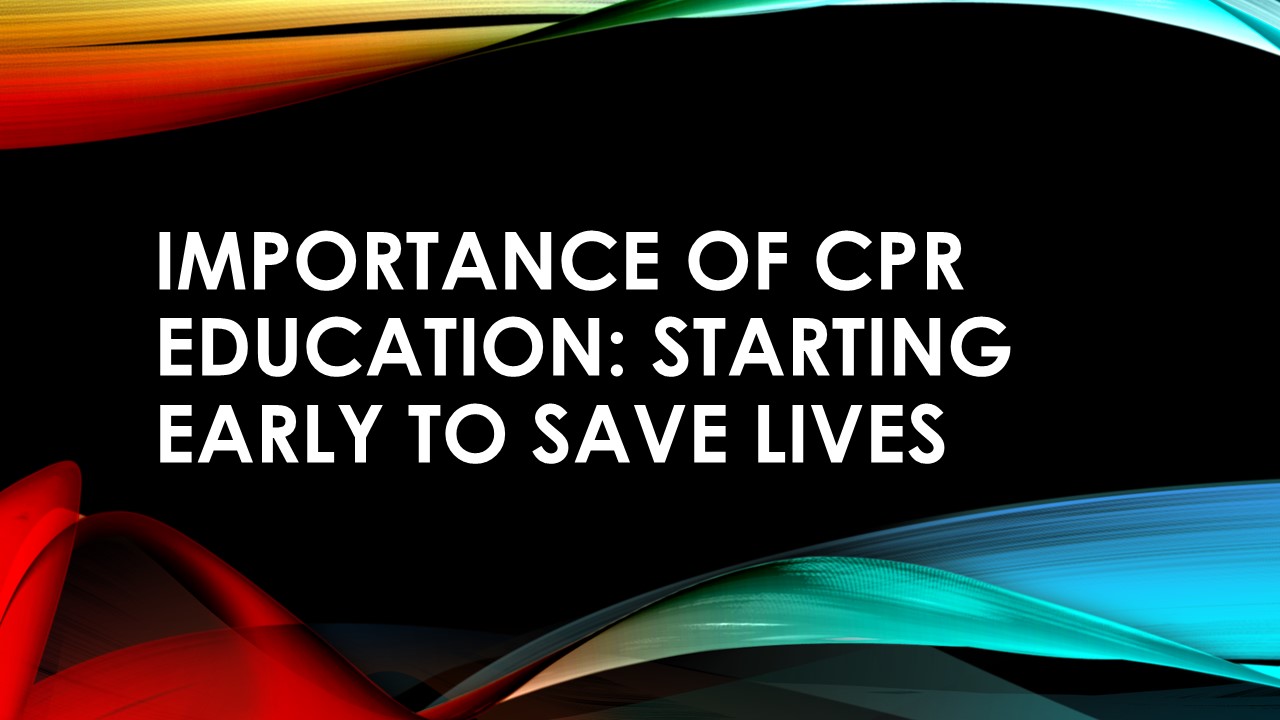Importance of CPR Education: Starting Early to Save Lives - PowerPoint PPT Presentation
Title:
Importance of CPR Education: Starting Early to Save Lives
Description:
Scientific statements play a crucial role in raising awareness about cardiovascular diseases and stroke-related matters, facilitating informed healthcare decisions. They outline the current understanding of a topic and identify areas requiring further research. While scientific statements inform the development of guidelines, they do not make specific treatment recommendations. For official clinical practice recommendations, refer to the guidelines provided by the American Heart Association. – PowerPoint PPT presentation
Number of Views:1
Title: Importance of CPR Education: Starting Early to Save Lives
1
Importance of CPR Education Starting Early to
Save Lives
2
According to a recent scientific statement, the
journey of learning cardiopulmonary resuscitation
(CPR) skills can commence as early as the age of
4. As children grow older, they can build upon
these skills, enabling them to perform effective
chest compressions on training manikins by the
age of 10. The International Liaison Committee on
Resuscitation (ILCOR), in conjunction with the
American Heart Association and the European
Resuscitation Council, has emphasized the
significance of early CPR education in a
publication in the journal Circulation. The
writing group, consisting of resuscitation
scientists from around the world, conducted a
comprehensive review of over 100 research
articles on CPR training for students. The review
revealed that school-aged children exhibit a high
motivation to learn life-saving techniques and
often act as conduits for knowledge
dissemination, sharing what they have learned
with others.
3
Chairing the statement writing group, Bernd W.
Böttiger, M.D., M.L., FAHA, a distinguished
professor and head of the Department of
Anesthesiology and Intensive Care Medicine at the
University Hospital of Cologne in Germany,
stated, "Training students has become a key
element in increasing the number of individuals
capable of performing CPR when cardiac arrest
occurs outside of a hospital, potentially leading
to higher rates of CPR and cardiac arrest
survival worldwide. This research review aims to
urge clinicians, policymakers, local school
officials, and the general public to take action
during cardiac emergencies whenever
possible." Given that the majority of cardiac
arrests outside of a hospital occur at home, it
is vital for all family members to understand how
to respond in such situations. Comilla Sasson,
M.D., Ph.D., FAHA, a member of the statement
writing committee and a practicing emergency
medicine physician, emphasized the potential of
building CPR skills at a young age and
reinforcing them consistently throughout a
student's educational journey. This approach has
the power to educate generations of students and
their parents on how to respond to cardiac
arrest, perform chest compressions, administer
rescue breaths, utilize an automated external
defibrillator (AED), and ultimately increase
survival rates.
4
Cardiac arrest outside of a hospital is a leading
cause of death worldwide, with survival rates
ranging between 2 and 20 globally. Immediate
recognition and action from a bystander are
crucial for improving these statistics. The
statement suggests that even if children are too
young or physically small to perform effective
chest compressions, they can still learn the
steps and rhythm required for proper CPR and gain
knowledge about AEDs. Research has demonstrated
significant community preparedness enhancement as
school-aged children share their learnings with
family members, friends, and neighbors.
5
- Alongside school-based initiatives, it is
essential for families to have a cardiac
emergency response plan in place. Regular
practice and delegation of responsibilities
within the household can ensure preparedness - Determine who will call 911 using a cell phone
and keep it on speaker while speaking with the
emergency dispatcher and initiating CPR. - Identify who will perform Hands-Only CPR
immediately, doubling or tripling the chances of
survival. - Ensure that the entrance to your residence is
unlocked, allowing first responders easy access.
6
This scientific statement was prepared by a
volunteer writing group representing the
International Liaison Committee on Resuscitation,
including member organizations such as the
American Heart Association and the European
Resuscitation Council. Scientific statements play
a crucial role in raising awareness about
cardiovascular diseases and stroke-related
matters, facilitating informed healthcare
decisions. They outline the current understanding
of a topic and identify areas requiring further
research. While scientific statements inform the
development of guidelines, they do not make
specific treatment recommendations. For official
clinical practice recommendations, refer to the
guidelines provided by the American Heart
Association.
7
Source https//medicalxpress.com/news/2023-05-ear
ly-age-scientific-statement.html Learn, Enjoy,
and Save Life. Healthforce Training Center offers
CPR Training and certifications such as Basic
Life Support (BLS), Advance Cardiovascular Life
Support (ACLS), Pediatric Advance Life Support
(PALS), CPR AED, Pediatric First Aid CPR AED, and
First Aid CPR AED.






























